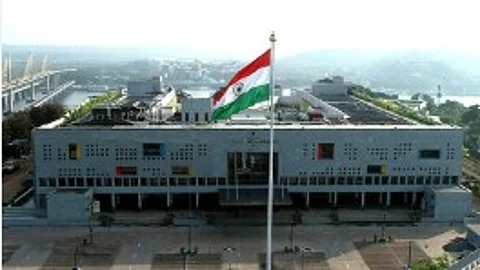

The High Court’s disposal of the long-pending case on the pollution of Salpem lake may have brought a legal chapter to a close, but for petitioner Prof Antonio Alvares, the battle is far from over.
He has made it clear that he will not hesitate to return to court if authorities slacken in executing the directions issued by the bench.
Speaking to O Heraldo, Prof Alvares, recalled that for more than 30 years, farmers abandoned the fertile fields adjoining Salpem Lake due to the constant inflow of untreated sewage from Margao.
“Through mechanisation, we have revived cultivation after decades, but completely stopping the sewage discharge requires more determined action from the agencies,” he asserted.
Just days ago, the High Court pronounced its order on the four-year-old Public Interest Litigation (PIL), issuing a detailed set of instructions to several departments — notably the Margao Municipal Council (MMC) and the Sewerage Infrastructure Development Corporation of Goa Ltd (SIDCGL) — with specific timelines for completion.
The PIL, filed in 2019 by Prof Alvares sought urgent judicial intervention to halt the contamination of Salpem Lake and restore its ecological balance. Over the years, unchecked sewage flowing through stormwater drains had not only degraded the lake but also polluted the adjoining River Sal. The proceedings exposed how stormwater nullahs were being misused for sewage disposal, significantly damaging local water bodies.
The litigation triggered a series of remedial actions. Wastewater from the Azad Nagar stormwater nullah was diverted, the South Goa Planning and Development Authority (SGPDA) connected the Margao market complex to the sewerage network, and authorities sealed several commercial units found dumping untreated sewage into drains.
Additionally, the Public Works Department (PWD), Sewerage began examining the feasibility of vacuum sewer technology for low-lying areas such as Malbhat and Gandhi Market, which have long remained outside the main sewerage grid.
Acting on recommendations from the Amicus Curiae, the High Court has now directed the PWD Division XXI, SIDCGL, and MMC to plan, tender, and commission the vacuum sewer system in the identified zones within 24 weeks of the order.
The MMC has also been instructed to carry out inspections every two months to detect and promptly repair leaks or other damage to the sewer lines.
Prof. Alvares hopes that the directives will lead to effective plugging of sewage and wastewater entering stormwater drains, which ultimately empty into Salpem Lake and the River Sal.
“This PIL succeeded in putting Margao’s sewage crisis on the map. Now it is up to the authorities to ensure these precious water bodies are restored for future generations,” he added.